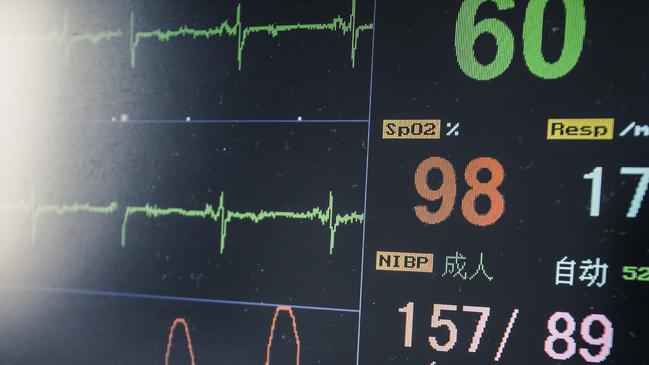HEART ATTACK: How your area’s heart health rates
It’s a shocking set of statistics that show us on a local level what’s causing heart disease to be our leading killer
Grafton
Don't miss out on the headlines from Grafton. Followed categories will be added to My News.
THE Heart Foundation has just released one of it's largest campaigns to date, showing us just what's leading us to heart disease, Australia's biggest killer.
They have released an interactive heart map where you can find out all the contributing causes, such as smoking and obesity, and how many people heart disease is putting in hospital, and killing.
We've drilled down through all the data, and created this smaller interactive that shows you everything you need to know about your local government area within the North Coast.
Some areas show surprising results. Byron Bay has an abnormally high death and hospitalisation rate from heart disease despite the relative privilege of the area and their better than state and national averages for causes.
Others are more straightforward, with the Clarence Valley well above the national and state average for heart disease deaths, with obesity an above average problem within the area.
Director of Health Strategy with the Heart Foundation Julie Anne Mitchell said that heart disease still kills 50 Australia's each days, and said the data shows there's still a great "heart divide" in some communities.
"In rural, remote and disadvantaged areas we are seeing a burden two times more affluent areas," she said.
Ms Mitchell said the contributing factors towards heart disease were complex, and in rural areas an ageing population, limited access to GP's and medical services as well as not having equivalent access to recreational facilities were all factors.
>>> RELATED: Shocking news as maps reveal damning heart statistics
"We can't get away from the fact though, there are broader determinates," she said.
"What we've done with these (heart maps), we've looked at four key risk factors: physical activity, smoking, obesity and blood pressure because we know they have a direct effect on the risk of heart disease and subsequently heart attacks.
"We've also looked at heart disease deaths and hospitalisation, and try to give a picture of what's going on at a local level.
"We think by mapping this it allows health services, local government and other agencies to pinpoint where support needs to go to support people to reduced their risk for heart disease."

If the figures in the maps alarm you, in some areas, they probably should. Ms Mitchell said the Heart Foundation continued to perform advocacy on public health issues, as well as keep the public informed of the risks, the signs of heart disease, and how they can make a positive change.
"At a local and personal level, we encourage every person over the age of 45, or over 30 if they're Indigenous to see their doctor for a heart health check," she said.
"We encourage people to know the full range of warning signs for a heart attack. Not only chest pain, but referred pain down their back, jaw or out of breath and nausea, and we encourage people to ring Triple-0 even if they're in doubt. Better they make the call, and the treatment can start over the phone.
"From a lifestyle perspective, it's about really small changes - small sustainable changes that make the biggest difference. If you exercise only once a week, maybe try to reach twice. If you're making choice about what you drink and eat, look for more opportunities to put more fruit and vegetables in your diet, and make water your choice if you have a choice.
"It's those small sustainable changes in lifestyle that you can sustain over the long term, and not a crash diet."
Ms Mitchell said the Heart Foundation hoped the maps were a conversation starter for authorities for how they can put more resource into the communities that had the greatest need, but stressed it was only one part of the journey.
"We don't just want to map the problem, we want to find the solution," she said.
The Heart Foundation maps can be found on their website at https://www.heartfoundation.org.au/health-professional-tools/interactive-heart-map-australia


